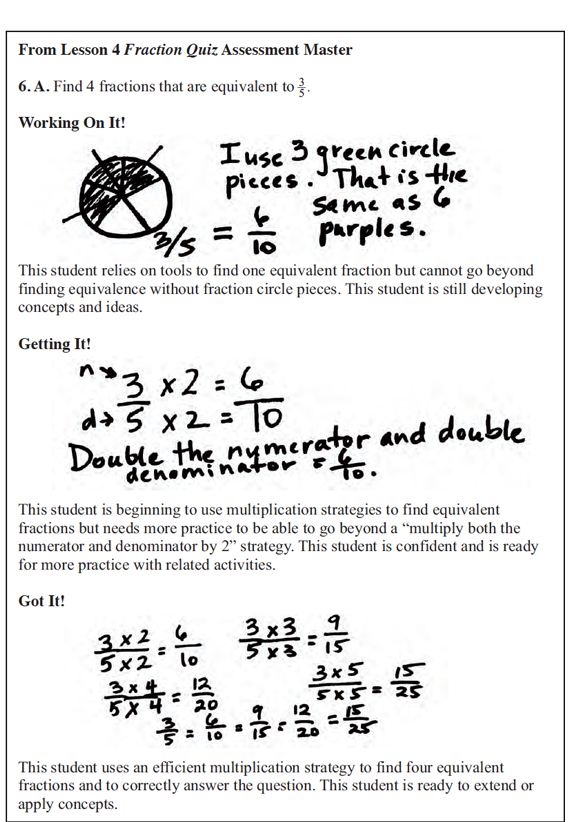Workshop: Fraction Concepts
Est. Class Sessions: 2–3Before the Lesson
Review student work and progress from previous lessons to guide instructional decisions about the following Expectations:
- E1.
- Represent and identify fractions (e.g., proper, improper, mixed number) using area models, drawings, number lines, words, symbols, and number sentences.
- E2.
- Recognize that equal fractional parts of a unit whole are the same size (e.g., all fourths of a rectangle are the same size).
- E3.
- Identify the unit whole when given a fractional part of a whole.
- E4.
- Find equivalent fractions using tools (e.g., area models, number lines) and multiplication and division strategies.
- E5.
- Decompose fractions into the sums of smaller fractions (e.g., 3/4 = 1/2 + 1/4).
- E6.
- Compare and order fractions using tools (e.g., area models, number lines), benchmarks, and multiplication and division strategies to find common denominators.
In Part 2 of the lesson, students will identify their level of confidence with a particular concept and choose problems from a Workshop Menu. See the TIMS Tip for more about Workshop Menus. Use your own evaluation of students' progress to help guide their choices. Review student work samples in Figure 2 to interpret students' confidence levels with finding equivalent fractions. The samples shown in Figure 2 are from Question 6 of the Fraction Quiz Assessment Master in Lesson 4.
Plan to organize the class into partners, small groups, or stations based on the problems students choose from the menus. Students can check each other's work and discuss solutions. Students may work with different groups or partners as the Workshop progresses.













